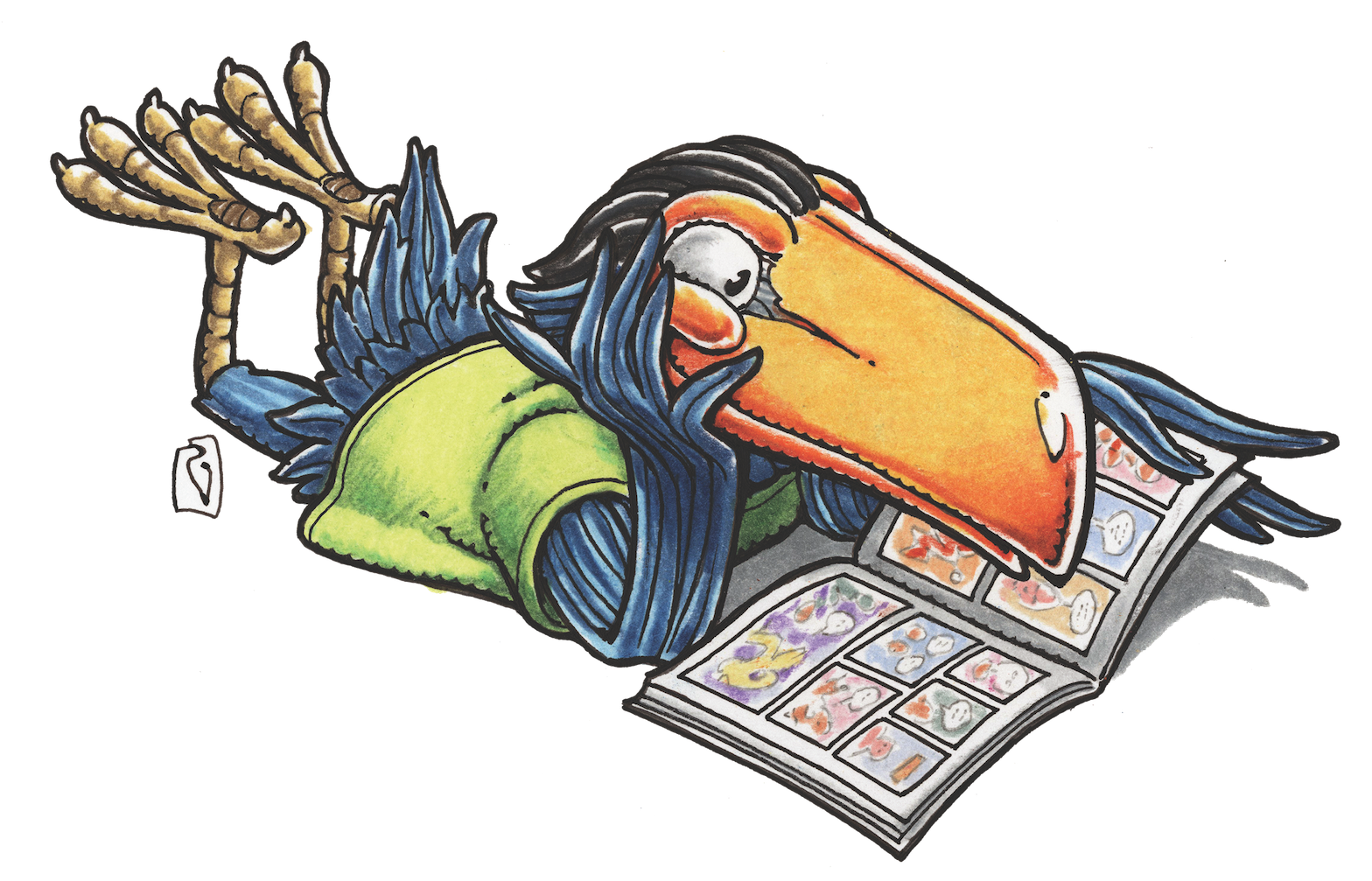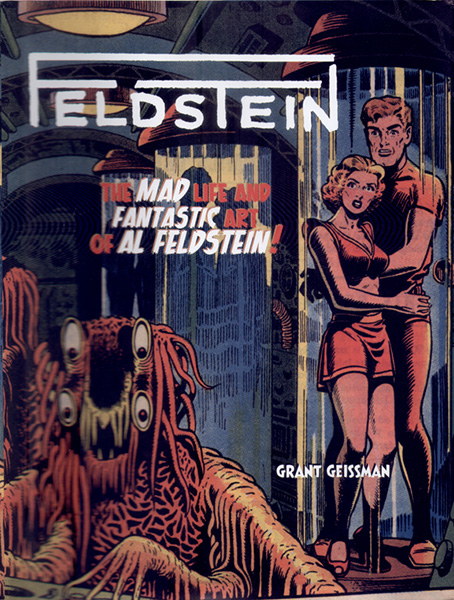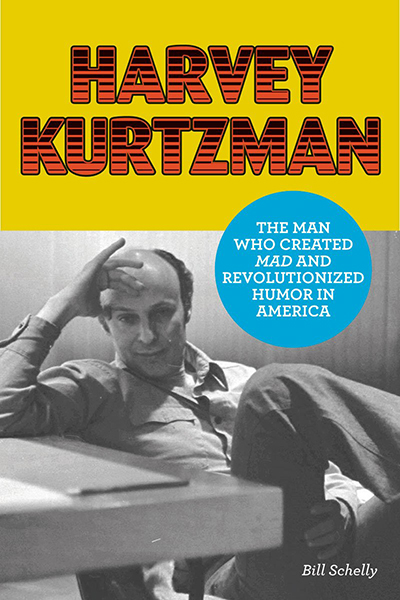MAGGIE’S WORLD
Maggie’s World 019: Comics Obsessives, Rejoice!


We are lucky ducks.
In Olden Times
When I first tried to find out more about the world of comics, it was the 1950s. Libraries might include one or all three of that time’s primary references.
In chronological order, they were:
- 1942 Comics and Their Creators: Life Stories of American Cartoonists by Martin Sheridan
- 1947 The Comics by Coulton Waugh
- 1959 Comic Art in America: A Social History of the Funnies, the Political Cartoons, Magazine Humor, Sporting Cartoons and Animated Cartoons by Stephen Becker

That’s not to say that there were no associated references. There were an assortment of collections of newspaper strips and magazine cartoons. There were a few autobiographies [e.g., Drawn from Memory: The Autobiography of John T. McCutcheon; (David) Low’s Autobiography]. There were how-to-draw texts [e.g., Carl Anderson’s How to Draw Cartoons Successfully; Frank F. Greene’s How to Create Cartoons: A Text Book for Class Instruction, Cartoon Clubs, and Self-Instruction]. There were even a surprising number of histories told from the viewpoint of political cartoons [e.g., Arthur Bartlett Maurice and Frederic Taber Cooper’s The History of the Nineteenth Century in Caricature; Bohun Lynch’s A History of Caricature; Rollin Kirby’s Highlights: A Cartoon History of the Nineteen Twenties].
But these were, nonetheless, few and far between: tricky to locate for the average lover of the art form. And many were, of necessity, illustrated scantily and often provided little more than a tantalizing taste of the riches of the field.
When Jules Feiffer gave us The Great Comic Book Heroes, we were in heaven: At last, there was a stunning collection of actual stories—accompanied by Feiffer’s inside view of the field. The world of comics was slowly beginning to evolve.
Today
People coming to the comic-book field half a century after Feiffer’s collection will simply take it for granted that they can get whatever comic art they want, new or old, beautifully reproduced.
And now, we can not only buy collections of a vast variety of comics from previous decades, we can also go behind the scenes, thanks to meticulous research on the part of devoted students of the field.
American Heritage used to run a feature titled “Before the Colors Fade”: articles in which information on a historical event was gleaned from people who had been part of that event. As we lose so many of those who brought color to our lives, there are at the same time researchers who are devoted to bringing us the information while the sources are still available. We are, yes, lucky ducks.
For example: One of the areas in which comics buffs first came together was from fascination with the line of series published by Bill Gaines’ Entertaining Comics in the 1950s. Before the genesis of more general comics fanzines that began in 1961, a number of young admirers corresponded with each other—and E.C. staffers—and published their own magazines, drew their own comic art, and began to research the titles that had morphed from the earlier Educational Comics line.

So it seems fitting that Grant Geissman—best known to the rest of the world as a guitarist and Emmy-nominated composer (check his Wikipedia entry)—has written two books, co-written another, and contributed to at least another 10 on E.C. This, although he was born a year and a half before the Comics Code began its impact on E.C. that eventually left only Mad standing. And last year, his biography of E.C. Editor Al Feldstein was released by IDW.
Here’s the thing: In the 1950s, a book on Feldstein might have had a few black-and-white photos and maybe some line shots from a couple of the stories. (Fredric Wertham’s 1954 Seduction of the Innocent attack on such material as that released by E.C. contained 16 pages of black-and white panel reprints.) And that would have been that. These days? Geissman’s Feldstein: The Mad Life and Fantastic Art of Al Feldstein! contains 416 full-color glossy pages of photos, art samples (including original art compared with the final printed versions), full comics stories, views of original correspondence, and more. Not to mention the full transcript of Bill Gaines’ April 21, 1954, testimony before the Senate Subcommittee on Juvenile Delinquency, of which the most that many know is that Gaines said there that the “severed head” cover of Crime SuspenStories #22 was in good taste—“for the cover of a horror comic.”
Geissman’s book is a treasure trove for anyone who cares about the world of creators and publishers from the Golden Age to today and could, frankly, form the basis for a college course all by itself. As a bonus: It’s fun.

But why would any biographer tackle this sort of topic, clearly one demanding devoted obsession to a field so condemned back in the 1950s? Big bucks? I asked yet another comics-focused historian, Bill Schelly, whose previous projects have resulted in more than a dozen books on films and comics (and comics fandom) and whose current focus is Harvey Kurtzman: The Man Who Created MAD and Revolutionized Humor in America, scheduled for Fantagraphics release in March 2015. He responded, “I’m fascinated with the way a creator’s life informs his art, and how his art affects his life. A good biography adds to our understanding and appreciation of its subject. A few years ago, I looked around and realized there was a biography of just about every major film star, maybe more than one, yet there were only a handful of really good biographies about the great figures in comics. I’m talking about more than books reprinting a lot of artwork with some sort of biographical essay, but primarily prose biographies that give an in-depth account of the creator’s life. So I decided to write one, then another, and now this book on Harvey Kurtzman. Obsessive? You bet!”
But remember the concept “before the colors fade.” Feldstein died two months ago, after his volume was published, so Geissman was able to compile his incredible compendium with the help of its subject. In fact, Feldstein provided an endorsement, printed on the back cover: “Grant Geissman has done a monumental, fantastic job on this book!” The subject of Schelly’s work, planned at 464 pages, died more than two decades ago. How did he research it? “That’s the challenge, especially because one can’t merely stitch material from other books and magazines. A beginning writer finds it very difficult to gain access to the material, because people aren’t often willing to help if you don’t have a track record. Since I’ve already had more than a dozen books published, almost everyone in Harvey Kurtzman’s life opened up to me. I conducted fresh interviews with Kurtzman’s publishers, colleagues and family, and managed to gain access to his archival papers, which were a treasure trove of information. I interviewed the late Al Feldstein, who worked at E.C. when Kurtzman created MAD, and succeeded him as editor. I talked to Hugh Hefner and Jim Warren, who published Kurtzman’s magazines after MAD. As a result of having great access, the book has all kinds of material that’s never been known before. Lots of surprises.”
So here we are, more than 65 years after Bill Gaines took over the company that his father had founded. We have “lots of surprises” about Kurtzman still to come and a variety of views about a company that provided one of the earliest focuses for comics fans. Does that make this E.C. Time? If so, why? “It’s always E.C. time!” Schelly responded. “Tales from the Crypt, Weird Science, Two-Fisted Tales and MAD are some of the greatest comic books ever published. Some argue they were the first comic books to prove that serious sequential art stories could be Art with a Capital A. Because of their influence on the field, they are as relevant today as they were 60 years ago. That’s why they’ve been so widely reprinted for the last three or four decades. EC is the comic-book company that wouldn’t die.”
In the Future
And the comic book is the art form that wouldn’t die. In fact, a glance at the national attention Comic-Con draws every year always startles me slightly. I grew up, after all, in an era when some parents forbade their kids to read comics at all. These days, comic art receives respect, and its history is considered worth exploring.
Yep. Lucky ducks.
(By the way? That “before the colors fade” thing? The colors—and their creators—shine brightly at Comic-Con, where I treasure each year the opportunity to learn more about them. See you there?)
Maggie’s World by Maggie Thompson appears the first Tuesday of every month here on Toucan!